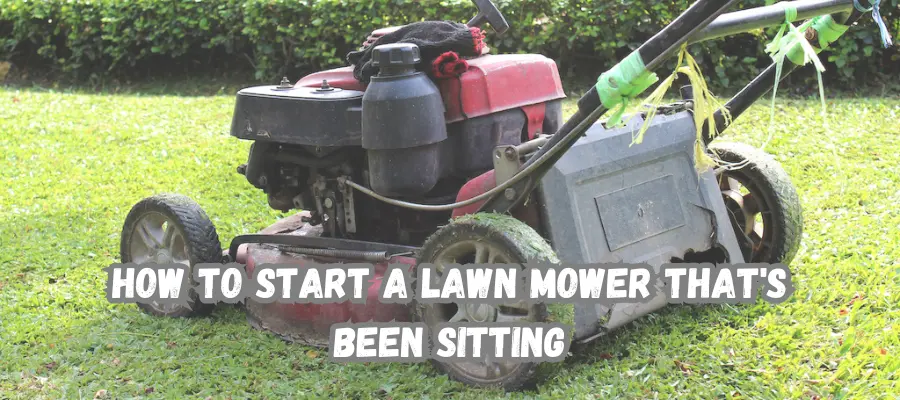Got a lawn mower that’s been sitting idle and now refuses to start? Don’t worry; you’re not alone. Many people face this issue after their lawn mowers have been left unused for a season or longer.
In this article, we will walk you through the step-by-step process of how to start a lawn mower that’s been sitting. By the end, you’ll have all the knowledge you need to get your lawn mower running smoothly again.
Neglecting a lawn mower can lead to costly repairs or the need to buy a new one altogether. By following the steps outlined here, you’ll save time, money, and effort. Let’ start!
📌Preparations Before Repair
Before you begin the process of starting a lawn mower that’s been sitting, it’s important to make some initial preparations. These steps will ensure that you work safely and efficiently.
Safety First
Always prioritize safety. Wear gloves to protect your hands from sharp edges and dirt. Make sure the lawn mower is on a flat, stable surface to prevent it from tipping over while you work. Disconnect the spark plug wire to avoid any accidental starts.
Visual Inspection
Start with a thorough visual inspection of the lawn mower. Look for obvious issues like debris buildup, damaged parts, or fluid leaks. Check the following areas:
Blades: Ensure they are not bent or damaged. Bent blades can lead to uneven cutting and vibrations.
Wheels: Check for proper alignment and any wear or tear. Misaligned wheels can make the mower difficult to push and control.
Body: Look for cracks or rust that might affect performance. Rust can weaken the mower’s structure, and cracks can indicate potential future problems.
📌Tools and Materials Needed
Having everything ready before you start will streamline the process and save you from unnecessary interruptions.
Tools
✔Socket Set: For removing bolts and parts. Ensure you have various sizes to accommodate different bolts on the mower.
✔Compressor: To blow out debris and clean parts. A small portable compressor should suffice.
✔Ultrasonic Cleaner: For deep cleaning the carburetor components. This is particularly effective for removing stubborn grime and deposits.
✔Hose and Clamp: For draining and replacing fuel. Ensure the hose fits the fuel line snugly to avoid spills.
✔Pan: To catch old fuel and oil. A wide, shallow pan works best to prevent overflow.
✔Magnetic Spark Plug Remover: Helps in removing and installing the spark plug without dropping it.
Materials
✔Fresh Fuel: Old fuel can cause starting issues. Use high-quality gasoline to ensure smooth operation.
✔Fuel Filter: Helps keep the fuel system clean. Choose a filter compatible with your mower model.
✔Oil: Ensure the oil is at the proper level and not too dirty. Check your manual for the recommended oil type.
Spark Plug: Check its condition and replace if necessary. A new spark plug ensures reliable ignition.
Detailed Checklist
| Tool/Material | Purpose |
|---|---|
| Socket Set | Removing bolts and parts |
| Compressor | Blowing out debris and cleaning parts |
| Ultrasonic Cleaner | Deep cleaning carburetor components |
| Hose and Clamp | Draining and replacing fuel |
| Pan | Catching old fuel and oil |
| Magnetic Spark Plug Remover | Removing and installing the spark plug |
| Fresh Fuel | Replacing old, stale fuel |
| Fuel Filter | Keeping the fuel system clean |
| Oil | Ensuring proper lubrication and cleanliness |
| Spark Plug | Checking and replacing if necessary |
📌How to Start a Lawn Mower That’s Been Sitting Step-by-Step Process
Remove the Old Fuel
Old fuel is a common culprit for a non-starting lawn mower. Over time, fuel can become stale and gummy, clogging the fuel system.
Steps to Remove the Old Fuel:
✔Drain the Fuel Tank: Attach a hose to the fuel line, remove the clamp, and drain the fuel into a pan. Ensure the hose is securely attached to avoid spills.
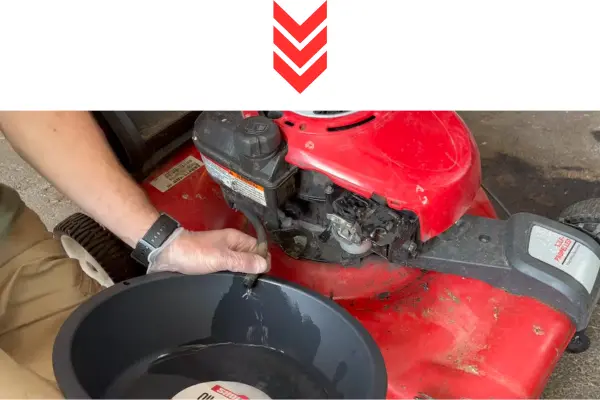
✔Check for Contaminants: Look for dirt or debris in the drained fuel. If the fuel is dirty, it indicates that the fuel tank or fuel lines may need further cleaning.
Clean the Carburetor
A dirty carburetor is often the main reason a lawn mower won’t start after sitting. Cleaning the carburetor can restore proper fuel flow.
Steps to Clean the Carburetor:
✔Remove the Carburetor: Take off the cover, air filter, and detach the carburetor. Use a socket set to remove bolts.
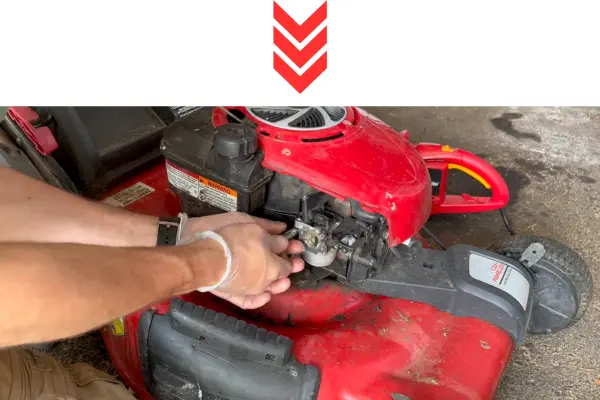
✔Disassemble the Carburetor: Take pictures of the linkage for reassembly reference. Carefully remove the bowl, float pin, float, and float needle.
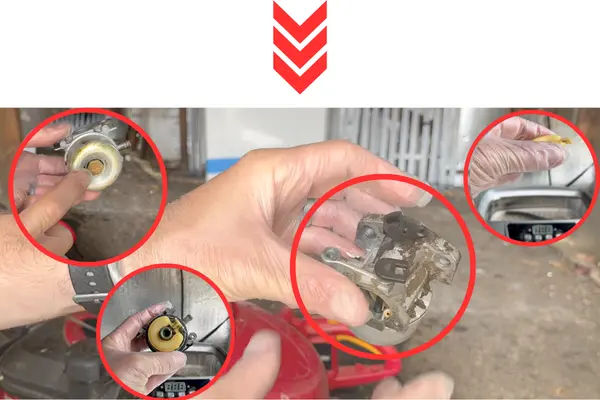
✔Ultrasonic Cleaning: Place carburetor parts in an ultrasonic cleaner. set timer for 10 min.
This tool is highly effective for removing built-up grime and restoring carburetor parts to like-new condition.
✔Blow Out Parts: Use compressed air to ensure all ports and pathways are clear. Focus on small passages that fuel travels through.
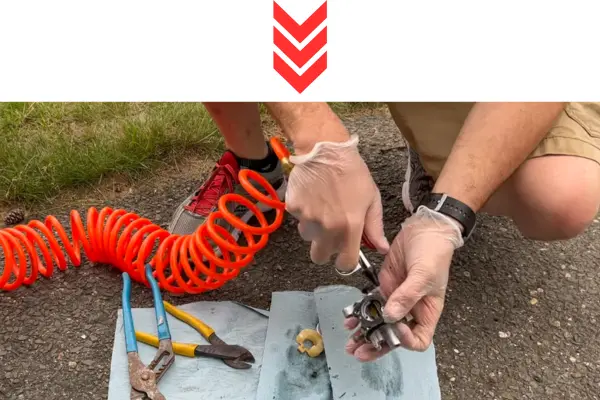
Inspect and Replace Fuel Lines
Fuel lines can become clogged or deteriorate over time. Inspecting and replacing them ensures a smooth fuel flow.
Steps to Inspect and Replace Fuel Lines:
✔Remove Fuel Lines: Detach the fuel lines from the carburetor and fuel tank. Inspect for blockages or damage.
✔Install Fuel Filter: Cut the fuel line and attach the fuel filter. Ensure the arrow on the filter points in the direction of fuel flow.
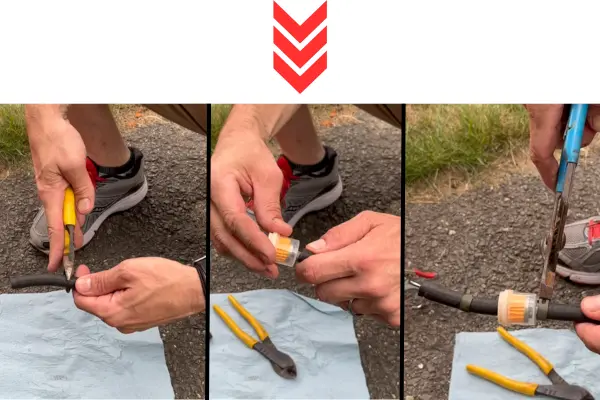
✔Reattach Fuel Lines: Secure the fuel lines with clamps. Ensure all connections are tight to prevent leaks.
TIP💡: Always ensure the mower’s fuel tank is empty before storing it for extended periods to prevent fuel system issues.
Check and Clean the Spark Plug
The spark plug is essential for ignition. A dirty or damaged spark plug can prevent the mower from starting.
Steps to Check and Clean the Spark Plug:
✔Remove Spark Plug: Use a magnetic spark plug remover to avoid dropping it.
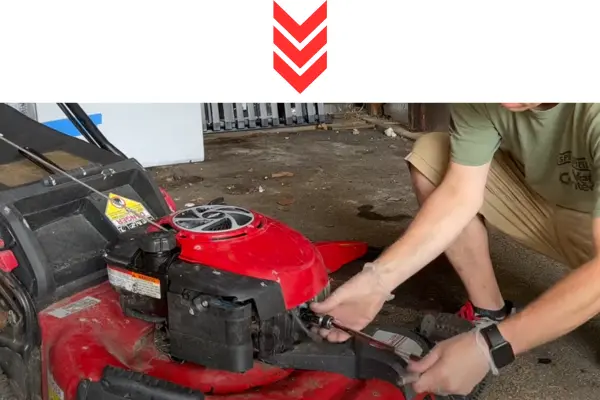
✔Inspect and Clean: Check the condition of the spark plug. Clean it with a wire brush or replace it if necessary.
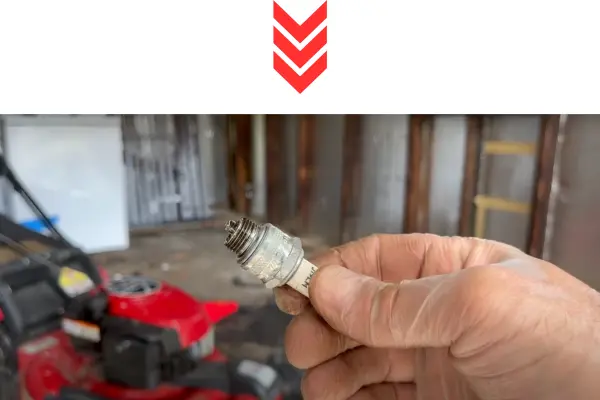
✔Reinstall Spark Plug: Ensure the spark plug gap is correct and reinstall it securely.
After completing all the steps, start your lawn mower. If it starts, you can begin mowing. However, if it doesn’t start, follow these troubleshooting steps:
Mower Still Won’t Start
✔Check Fuel Quality: Ensure the fuel is fresh and not contaminated.
✔Inspect Air Filter: A clogged air filter can prevent starting. Clean or replace as needed.
✔Spark Plug Issues: Double-check the spark plug gap and cleanliness.
Engine Stalls or Runs Rough
✔Carburetor Adjustment: Make sure all parts were reassembled correctly and adjust if necessary.
✔Fuel Lines and Filter: Check for any kinks or blockages in the fuel lines.
✔Oil Level: Ensure the oil level is correct. Too much or too little oil can cause engine issues.
📌Preventive Maintenance Tips
To avoid future issues with starting your lawn mower, regular maintenance is key.
Preventive Maintenance Schedule:
| Task | Frequency |
|---|---|
| Check and Replace Oil | Every 25-50 hours of use or once per season |
| Clean or Replace Air Filter | Every 25 hours of use or more frequently if dusty |
| Inspect Spark Plug | Every season, replace if necessary |
| Clean Carburetor | Every season or as needed |
| Inspect Fuel Lines and Filter | Every season |
Conclusion
Starting a lawn mower that’s been sitting for a while can be a straightforward process if you follow the right steps. By ensuring safety, gathering the necessary tools and materials, and meticulously cleaning and inspecting each part, you can revive your lawn mower and keep it running smoothly. Regular maintenance and proper storage will prevent future issues and extend the life of your lawn mower.

